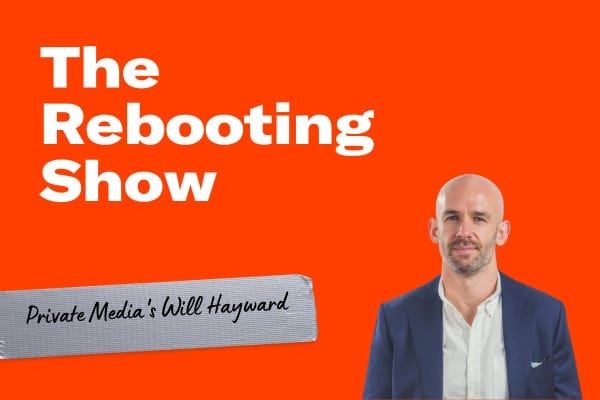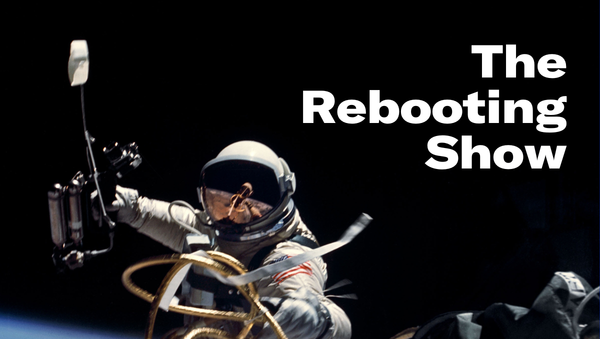Nostalgia
The Messenger is from a bygone era that isn't coming back

I’m getting ready for a busy week at the Cannes Lions festival. The Rebooting is partnering with Dotdash Meredith for a “cocktails and conversation” event at the Dotdash Meredith villa, which is probably a better venue than my Airbnb. I’ll record a podcast episode on Thursday, June 22 at 4pm with Dotdash Meredith CEO Neil Vogel, followed by drinks and snacks. Sign up in this form to get an invite.
The lure of nostalgia
One of the perils of aging is falling into the nostalgia trap. You have to be on constant guard against the irresistible pull to morph into Grampa Simpson shaking his fist at a cloud. Nostalgia is a crutch, a way to find some sense of comfort and stability in a fast-changing world that seems to be veering out of control. Most nostalgia is harmless. The worst serves as a form of escapism and denial of the realities of the here and now.
We are also clearly between eras in the media business, although what comes next is blurry and hard to discern. With an unclear future, we are in a moment when media nostalgia is rife. There’s pining for the homepage, a revisiting of the thesis that digital upstarts would eat incumbents’ lunch, and in many cases a desire for a real or imagined simpler time in the business.
The Messenger launched yesterday with a throwback mission of “impartial and objective news” (and tons of other Daily Mail-style celebrity and entertainment content). The entire project has been framed as a return to better days, when the family gathered round the old boob tube to watch Andy Rooney bitch about how the cornflakes boxes were so big but weren’t filled with cereal.
I’d love to return to simpler times, only I don’t expect that to happen in a world where even Google worries about having no moat. The Messenger at launch is something you’d expect in 2012-2014, an homage to classic Huffington Post mixed with some Daily Mail envy.
I dutifully read the big debut interview with Donald Trump and scrolled past a dozen programmatic ads for USB-powered backpacks. Normally sites launch with well-crafted ads from launch deals and then slide into a smorgasbord of overlapping display ads, autoplay video and robust content-rec implementations that turn the dial to revenue vs quality. Give The Messenger credit for skipping that step to get right down to business – there’s even an old-school “welcome ad” full-screen interstitial for mobile. There will be homepage skins, I’d wager.

On last week’s episode of The Rebooting Show, Axios’s Sara Fischer gave The Messenger credit for a well-thought monetization plan, and let’s face it, selling ads right now is tough. This is a churn-and-burn pageview model at a time when changes to search herald the demise of the pageview as the atomic unit of digital publishing, and coming out of an era where the scale + ads combination has mostly failed for news publishers.
By Semafor’s Max Tani’s count, The Messenger churned out 140 stories in its first 14 hours, including one 98-word barn burner that was an embedded tweet of George Soros confirming he’s actually not dead. IB Times would approve. Veterans of the content mills are unlikely to be impressed; after all, back in 2013 The Huffington Post was cranking out 2,000 articles a day, or one every 58 seconds, it bragged. Commodity content, easily found everywhere, is little valued in the marketplace, and more is just more.
At a time when one bright spot for publishing is niche and deep, The Messenger appears heading in a completely opposite direction. The Messenger’s, erm, ambitious traffic and revenue goals are a throwback to an era chronicled in Ben Smith’s end-of-an-era book, rightly called “Traffic.” Just because The Magician is still open doesn’t mean it’s 2014.
The Messenger, by all appearances and what they’ve said, is running a playbook from this time. It has a classic mullet strategy of “non-partisan news” in the front and clicky nonsense in the back. As Jay Rosen noted in a conversation we had last month, news needs new subsidies, and SEO operations have long been a key subsidizer, particularly after viral traffic fell off a cliff. Search traffic dropping by a substantial margin will prove a death knell for many. There’s no going back, even if Barry Diller wants to turn back the clock on various original sins of the transition to the internet.
The Messenger has whiffs of Portfolio, the last-gasp effort from Condé Nast to reclaim a bygone era of glossy magazines. Launched in 2007, Portfolio lasted two years and burned through $100 million.
The pull of nostalgia is helped along by the sense that many legacy media brands have fared better – maybe less worse is right – than the digital upstarts that were supposed to eat their lunch. BuzzFeed’s IPO was intended to make it a publicly traded “bellwether” of the sector. If so, that’s not a great sign. Compare that to Forbes, which many mock for its low-rent monetization tactics, yet still fetched $800 million, albeit in a somewhat sketchy deal. That’s nearly 10 BuzzFeeds. That’s the power of franchises, and likely why Sports Illustrated will not let the Swimsuit Issue rest in peace, a relic of a bygone age. Instead, we get Martha Stewart as the cover model in a PR play.
Rather than pining for the past, it’s better to deal with the present and move forward, even if that means with curtailed ambitions. There are working models already in niche areas. The media business is hard, but it’s also an execution business. I spent last week at the Omeda OX6 conference – my interview with Time CEO Jess Sibley will be out on Thursday – and spoke with several smaller and niche publishers doing the blocking and tackling needed to build sturdy business models. It’s a different world than the venture-funded plays that end up gobbling up attention.
The rearguard fights against the incursions of AI in the media business are delaying actions. At best that will buy those in the media business time to reorient their businesses, whether that’s rejecting AI in favor of a pastoral life of newsletters, abandoning publishing as a business and embracing it as content marketing, or turning to “AI-leverage individuals.” No matter what, there’s no turning back the clock and the only option is to keep going forward.

Let’s talk ‘Active Attention’ Economy at Cannes
The Kerv Café is going to be the center of attention this year with content you don’t want to miss. Join us for three days of exclusive thought leadership conversations and cocktails with the industry’s best to discuss the Attention Economy and the future of publishing, streaming, AI and creativity.
Taking on Murdoch

On The Rebooting Show this week, I spoke to Will Hayward, the CEO of Private Media, an independent publishing company in Australia that publishes several titles, including politics-focused Crikey.
Will has recently faced the intriguing and likely slightly terrifying experience of being the subject of a defamation lawsuit filed by Lachlan Murdoch over a Crikey opinion column that held the Murdochs were “un-indicted co-conspirators” of the Jan 6 attack on the US Capitol. Murdoch withdrew the lawsuit in the aftermath of Fox settling its case with Dominion, much to Will’s relief.
We discussed the case, the decision to stand firm against a powerful and angry individual, and how Crikey made lemonade out of lemons by using the case to rally support for the politics publication through subscriptions. We also touch on the impact of Australia’s news bargaining code that has wrung payments from platforms and is the model for similar laws worldwide, including in the US, as well as lessons learned from the social publishing era, since Will was in the thick of it.
Out and about
If you’re in Washington DC, I’ll be interviewing Industry Dive CEO Sean Griffey on Thursday, May 18, as part of a MACMA event. Come to Industry Dive HQ for the chat and lunch. Registration and more information is on the MACMA site.
Get in touch if you want to discuss sponsorship options to have a conversation with over 16,300 publishing professionals. My email is brian@therebooting.com.




